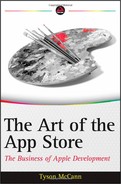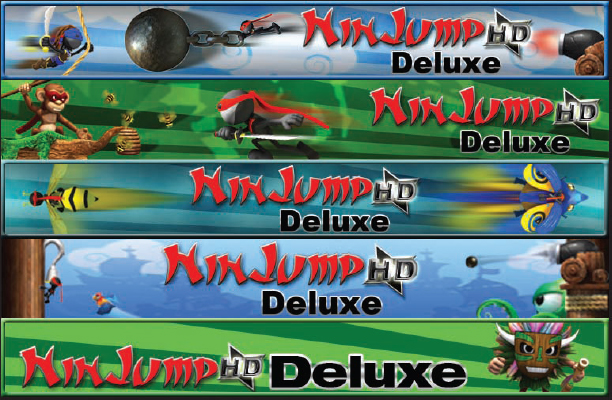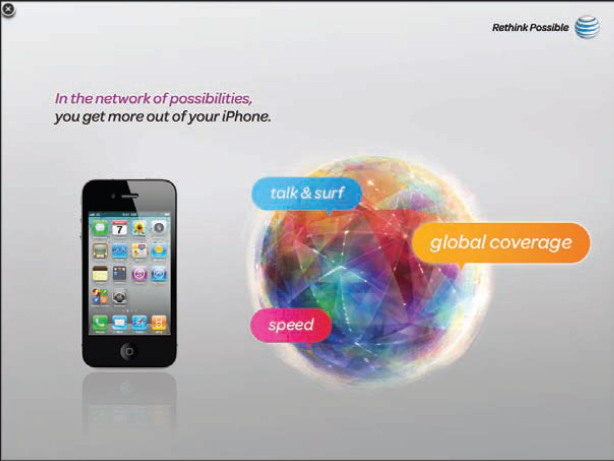HOW TO SUCCEED WITH PAID APPS
Paid apps have higher expectations from users than free apps. It's these expectations that make up the paid app mentality, and there's a different mentality for each type of app, both non-premium and premium. This section elaborates on some of the expectations introduced in the section, “Business Reasons Behind Revenue Models,” earlier in this chapter, including a great example that utilizes a lite app with ad support in addition to in-app purchases.
The Paid App Mentality
You wouldn't expect much success by taking any old free app and suddenly deciding to make it paid if it doesn't meet essential niche and customer expectations for its new price point. Therefore, rather than being differentiated only by price point, non-premium and premium paid apps should be defined by a separate mentality, or way of thinking about the expectations involved at a particular price point.
Take a premium app, for example. The amount of dissonance from your actual price point to whether you are offering a truly “premium” app in terms of niche and customer expectations can, in large part, determine its success. This goes for polish, support, content available, in-app purchase options, and so on.
For the purpose of a point of reference, let's establish that non-premium paid apps on iPhone will be anything from $0.99 to $2.99 (with $0.99 being by far the norm), and premium apps will be anything from $3.99 on up. It truly depends on the target device, though. For iPad devices, it's not uncommon to see apps at $4.99 and, therefore, it's a bit of a gray area as to what's premium and not premium. For iPhone apps, that would almost always fall into the premium category.
Non-Premium Mentality
For a non-premium paid app, the mentality should consist of the following development guidelines, any one of which could be applied to other revenue models, but when taken as a whole, make up the non-premium paid app mentality:
- Unique feature(s) not found on competing apps — You must be better at offering comparable features at the same price. Additionally, you should be offering something uniquely tied to your app, whether it's in aesthetics or functionality.
- Increased support and post-release updates — In most cases, updates are critical for user retention. Even before purchase, seeing that your app has recently been updated can be a huge factor in a purchase decision, and provide good rationale after purchase. For example, updates tell your customers that you care about product quality, and will be around to fix bugs and sort out other issues as they arise, with hopefully some new updates, or new features added in for good measure. Even if you have a monopoly on the current market for your unique feature, unless you offer good support, your customers will be very ready to drop your app in a heartbeat as soon as something similar or better comes along. Customer loyalty is driven by support.
- Increased polish from free (not freemium) apps in the same niche — Adding polish to an app or game means all the things you do in order to smooth out the rough edges, and can also mean going above and beyond what an average app does. Polishing an app (or any piece of software) is an art in and of itself. Here are some guidelines for polish, which would also be recommended for any type of app, but especially paid apps, where expectations are somewhat higher:
- Add proper user interface feedback for all button presses and other actions.
- Ensure that there are no critical bugs (such as the worst kind — crash bugs). Test on multiple devices and iOS versions, and make these your highest priority. Next, move on to gameplay or functionality bugs, and then graphic, text, and audio bugs.
- Spare no expense on your app icons, and make your lite version and paid version significantly different. (This doesn't have to be completely different, but could be shading or some extra touches.)
- Improve speed and responsiveness of functionality. Actions and their responses should be instant and not “laggy.”
- For games, ensure that all controls are tweaked to be the best they can be. Tweak for the casual, not the hard-core users. And don't forget to add support for alternative control schemes.
- Ensure that your Quality Assurance (QA) team has a test plan that, aside from all functionality, includes testing integration with social apps like Facebook or Twitter; lite app integration and its ad support; in-app purchases in both lite and paid apps; and that “rate this app” functionality works.
- Not ad supported — Paid apps are expected to be free from ads, or else you can expect customers in the rating section of the App Store to rise up with pitchforks and pop at least a few of your stars.
- Lasting value, exceptional entertainment, or practical value — One of these three is needed for a non-premium paid app. For a premium app, remove the entertainment part and add “exceptional” to the first and third requirements.
- Knowing why you are charging more — For the typical paid app, other free options are generally available. So, knowing what makes yours special and worth money is important. The answer to this will be how you create your keyword-rich feature list in the App Store description area.
- Having a longer-term retention plan — Try to figure out a way to monetize your paid app for in-app purchases and at least periodic content updates to keep people using it longer. This will smooth out or increase revenue, and help to ensure that it lasts as long as possible.
- Knowing when to drop the price — There is always a point when you won't want to keep bailing water out of a sinking ship. This would be akin to continually spending money on updates before trying something more drastic such as a move to free. Keep an eye on slowing sales, and stagger updates. As soon as updates are no longer producing the type of sales spikes you want to see, consider dropping the price. First, try a time-limited basis, then wait a bit, and then go free if needed, promoting it as a positive philanthropic action.
CONTROLS FOR THE CASUAL AND THE HARDCORE
The development team didn't add gyroscope controls in “Archetype” because they didn't consider it a high enough priority for launch. Soon after release, however, several reviews were asking for this type of support. These were from hard-core users to be sure, but nevertheless, sometimes the vocal minority must be addressed, or their reviews can influence casual purchase decisions in a negative way. The team added in the controls during one of the early post-launch updates.
The way movement and rotation speed was tweaked in the three-dimensional (3D) shooter for “Archetype” was to provide a min speed, max speed, and default values. The user would be able to set these from 1 to 9 in Options, with 5 being the default. However, the default wasn't simply an average of the two, because that would have been too fast for a casual user. Instead, the programmer gave the team a range of possible values to test, from impossibly slow to impossibly fast. When the team provided these three values, it then averaged the low-to-default values for the 2, 3, and 4 speeds, and then averaged the default-to-max values for the 6, 7, and 8 speeds. The reason the default was a bit slower than, say, some of the team would have wanted was to maximize precision for the casual user, because negative feedback would have ruined the game (in which fine control was critical).
Premium Mentality
Because apps in the premium price range vastly outnumber games, the prevailing mentality mostly applies to them. However, there may be a point when an entertainment app or game offers something truly unique and unparalleled, and, therefore, you might be able to charge premium prices.
The premium mentality consists of the following guidelines:
- Secure, original content — With a premium app, you're offering something no one else has access to (or should have access to), or can easily duplicate.
- High practicality or usefulness — Again, the higher the value toward a user's own advancement, the more he or she is willing to spend. Entertainment-only apps usually need not apply.
- Support with in-app purchases — Downloads are going to be much lower than a low-priced or free app. Just because you're premium priced does not mean you can't have extras to help even out revenue, as long as they aren't part of the core experience customers are paying for. Consider subscription-based, in-app purchases for significant content or support updates. Consider paid DLC via in-app purchase that adds optional value to some premium content. Remember, of course, the core value must be extremely high in the first place.
The key goal for the typical premium-priced app is to lay an earthquake-proof foundation for a feature monopoly based on your niche, then work on keeping your customers happy and loyal. Competitors will find it tougher to emulate something that takes a lot of effort and research, and not worth the investment. Big fish eat little fish, so turn yourself into a big fish.
Integrating Your Lite Version
As mentioned in Chapter 7, in almost all cases, it is well worth it to support a paid app with a lite version. There simply are too many alternatives for customers to risk money on an app that may not deliver, because it's becoming a common technique for apps that lack polish to release as paid, and also be unsupported by a lite version in the hopes of luring in some amount of sales. For most lite versions, ad support for revenue from your unpaid version, more downloads, and hopefully balanced content incentives will ensure maximum conversion to your paid app.
This section looks at an example of a top 100 app from Backflip Studios, and what they've done with the popular “NinJump HD Deluxe” non-premium paid game on iPad. It is currently selling for $1.99, and supported by a lite version named simply “NinJump HD.” The reason this particular example is used is that it touches on important aspects of a paid app, from utilizing ads to adding in-app purchases at a later date where none existed before. In addition, the potential areas where it has room for improvement will be noted, whereas this is much more difficult to do with an app that is already at Number 1.
The Paid App Upsell
“NinJump HD” is an incredibly casual action game if my 3-year-old is any indication. It features extra-vibrant colors, fantastic art presentation — especially animation — and fantastic simple control. Although the interface graphics aren't quite up to the same level of polish as the rest, it still fits with the theme, and is very user-friendly with minimal big buttons and icons.
Chapter 7 explored the example of a Number 1 lite game named “Mahjong Towers Touch HD.” Therefore, to further illustrate specifics of the upsell method, this section uses “NinJump HD” and its numerous upsell points as another good reference.
Not including the ad at the top (which rotates with other apps, and is discussed next), Figure 8-3 shows the upsell placement in four spots within the app. The number “1” indicates the game-over screen. The number “2” designates the main menu, which periodically changes color and background just like an ad to draw attention. The number “3” indicates the Options screen, and clicking this button takes you to the separate in-app purchase landing page shown in Figure 8-4. The number “4” is the button that links to the scrollable cross-sell list of other apps in the Backflip Studios catalogue, including “NinJump HD Deluxe.” Note that each upsell point is in an area that sees heavy use.
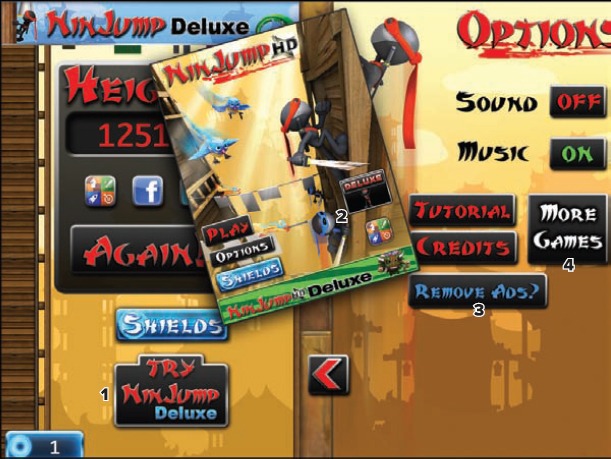
FIGURE 8-3: “NinJump HD” (the lite version of the paid app, “NinJump HD Deluxe”) has four static upsell spots in heavily trafficked areas
The key points to remember when placing upsell pitches for your paid app are to find unobtrusive areas of heavy traffic, and make each pitch slightly different. Note that in the images, each upsell is not using the same graphic or text. As much as possible, you'll also want to get metrics about what is the most successful method of conversion, and try different things to see if you can improve on it. Chapters 10 and 11 provide much more information about turning metrics into actionable results.
Next, let's go more in-depth about ad placement and strategy in a lite app. Chapter 7 provided an overview of ad servers, and, in the following examples, you'll see specific placement techniques used in “NinJump HD.”
Ad Support
“NinJump HD” has four main types of horizontal banner ads (the most common type being in the vertical position). The first is several different graphic versions of the “NinJump HD Deluxe” paid app. These rotate in with the other ads (see Figure 8-5 and Figure 8-6). Remember from the discussion in Chapter 7, the goal of ads is to have a high fill rate of targeted ads so that users are always presented with one when able.
The second group of horizontal banner ads features several ads cross-selling other apps by the same studio, often in multiple graphic options as well, as shown in Figure 8-7. This is something you should do as soon as you get any other apps for your brand.
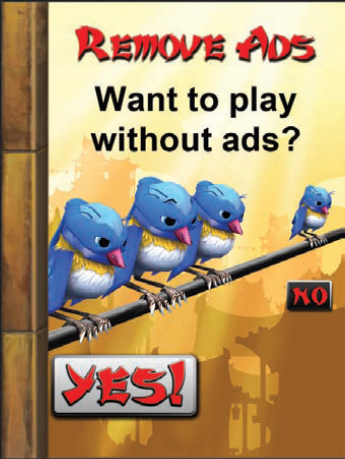
FIGURE 8-4: By clicking to Remove Ads in “NinJump HD,” and hitting this landing page, buying the paid version is now an in-app purchase, rather than an App Store download
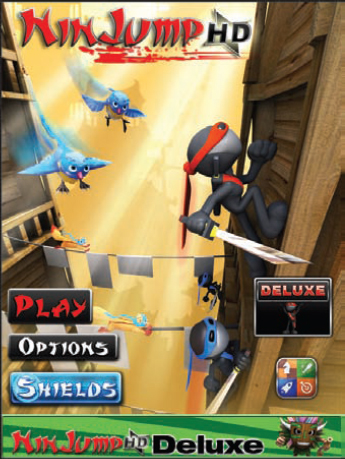
FIGURE 8-5: Every time users access the “NinJump HD” lite app, they'll see ads served at the bottom
FIGURE 8-6: Create alternate versions of your upsell ad, because this will draw more attention

FIGURE 8-7: Don't forget to cross-sell to your other apps in your ad rotation
As shown in Figure 8-8, the third type of ads is actually other games served as affiliates, targeted to this demographic. Note the promotion of “Zynga Poker” by Zynga and “Tap Zoo” by Pocket Gems. Clicking these ads takes you out of the app and directly to the App Store.

FIGURE 8-8: Affiliate ads can generate revenue as well, even if they're for competing games
The fourth type is interactive ads, likely served up by iAd discussed in Chapter 7, and shown in Figure 8-9). These ads are highly animated and polished, and you can interact with them without taking you out of the app. There may be other types, depending on how many ad servers they incorporate. Oddly enough, this iAd requires users to rotate the canvas to a horizontal position in order to interact with it, though the native app was in vertical position. Perhaps that's considered an additional interactive element.
FIGURE 8-9: iAd interactive advertisements can keep users engaged and in the app
Lastly, “NinJump HD” doesn't just place ads on the main menu. Instead, as shown in Figure 8-10, there's a large banner at the top of the main gameplay screen that does the same thing, yet doesn't obstruct gameplay, which is critically important. As you also saw with the calculator app in Chapter 7 (with the banner along the bottom), ads should not be obtrusive, but be placed in areas of heavy traffic and not interfere with the main functionality. Also worthy of note is that the apps promoted on the main gameplay screen are ones offered by Backflip Studios (not iAd or affiliate-based), and do not change during gameplay. Only when users fall to their doom is a new ad served up so as not to be too intrusive. Again, however, the developer is offering many versions of the same ad with different graphics.
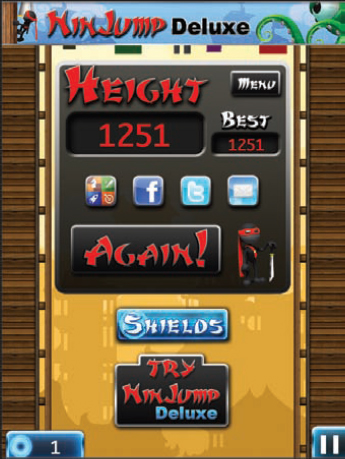
FIGURE 8-10: “NinJump HD” ensures its new ads on the main gameplay screen are served up only during the game-over screen so as to remain unobtrusive
Adding In-App Purchases
Because in-app purchases can be critical in sustaining revenue over a longer term, let's look at how “NinJump HD” went from a paid-only solution to paid-with-a-single-microtransaction app.
The goal in “NinJump HD” is simply to climb a wall as high as you can go. Sometimes stuck to the wall are shield bubbles that activate automatically when touched, and can protect you from one enemy attack. Backflip Studios used this mechanism to essentially allow users to buy their way to higher scores via an in-app purchase before and during the game, and then activate them at will. As you can imagine, the game can go on for a long time, and users encounter cooler stuff the higher they go. Backflip Studios hopes, therefore, that a high score will be enough incentive to buy this resource that will eventually run out.
Note that the various purchase options currently only go to $24.99. Though this may seem like a lot of money, as illustrated earlier in this chapter, with an average per-user per-transaction fee of $14, having an option for a $49.99 and $99.99 might actually work well for them, because these are price points that would convert because of their value. For example, 500 shields could cost $49.99, and 1,500 shields could be $99.99.
As with upselling your paid game, it's important that you make new in-app purchases as visible as possible. In the case of “NinJump HD” and “NinJump HD Deluxe,” Figure 8-11 shows how Backflip Studios added the option to purchase shields nearly everywhere: on the main menu (see “1” in the image), the gameplay screen (“2”), the game-over screen (“3”), and the Pause menu (“4”). This is not always viable for every app, but the figure shows one way it has been done.
Expanding to future updates, later in-app purchase options for the “NinJump” series might be the option to purchase new levels. They have four already, so customers may not complain too much if there were a fifth for purchase. However, one thing to balance it out might be a simultaneous free update of different blades you could unlock via your scores or number of times played. They could then add the incentive to unlock a certain blade only within one of the in-app new levels that have been purchased.
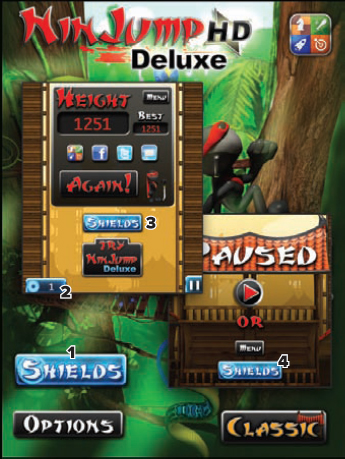
FIGURE 8-11: Both the lite and paid app of “NinJump HD” utilize a new in-app purchase in various areas
DLC FROM PAID TO FREE
Sometimes, there's a balance with perceived value versus greed. In the case of “Archetype,” on release, the developers had about six levels of death-match action. They felt like that was enough, and really wanted to add more paid DLC to the existing paid game. In a huge update a few months post-release, they offered paid DLC with a Capture the Flag (CTF) mode, more levels, and a slew of other enhancements for $2.99, the same price as the original app. Also, around this time, the app itself went to just $0.99, which, as evidenced in iTunes user reviews, conflicted many users who expected either less costly DLC, or all updates to be free. With any DLC, even for apps with extreme value already, you will have a vocal minority who believe any updates should be free, or less than you're charging.
Within six months after the paid DLC update, it was difficult to get enough users to adopt the new mode because of a lack of players, and hence make it worthwhile. As a result, shortly after this, the paid DLC went free.
With DLC, especially in the case of multiplayer DLC, be careful that content doesn't require other users to also buy it in order to view or enjoy it. In hindsight, better perhaps would have been free CTF integration and different DLC options, such as a new focus of appearance-like packs or non-gameplay affecting armor microtransactions. After all, it was part of the team's mission for the game to differentiate by not allowing users to buy progress, because a competitor had that market covered.
